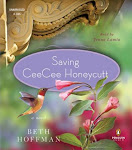 The return of the native / Thomas Hardy; narrated by Alan Rickman. -- North Kingston: BBC Audiobooks America, 1985.
The return of the native / Thomas Hardy; narrated by Alan Rickman. -- North Kingston: BBC Audiobooks America, 1985.13 sound discs (15 hr., 45 min.) : digital ; 4 3/4 in.
ISBN: 9781572705708
(Cover to Cover)
This recording was first published in 1985 by Audio Partners, Auburn, California
Unabridged
823.8
1. Country life -- England -- Wessex -- Fiction. 2. Domestic fiction. 3. England -- Social life and customs -- 19th century -- Fiction. 4. Man-woman relationships. 5. Married people -- England -- Wessex -- Fiction. 6. Pastoral fiction. 7. Wessex (England) -- Fiction. 8. Young women -- England -- Wessex -- Fiction.
Egdon Heath is a sparsely settled wilderness in the southwest of England. It’s dominated by the wind, the sky and the feral vegetation of fern and furze. It is, as the author introduces it in the first chapter, “a face on which time has made but little impression.” To its native inhabitants it’s a quiet county refuge from the bustle and commotion of the mid-nineteenth century, but to young Eustacia Vye it’s a wilderness of exile from civilized life from which she has little hope of escape. Damon Wildeve, her former boyfriend and owner of the local inn is about to marry Tamsin Yeobright, a pleasing and innocent girl from a good family, and Eustacia is suffering bitter pangs of envy and jealousy. Damon wasn’t all that much of a catch, but emotional entanglement with him was her only source of relief from the tedium of county life. And then she hears that Tamsin’s cousin is coming for a visit. He’s a clever and promising young man, a diamond trader who lives in Paris – Paris the heart of civilization, culture and beauty. But how will she manage a visit to the home of her rival? Eustacia begins to scheme.
The characters carry their passions, pride and false assumptions about the motives of their fellows with them as they criss-cross the heath, but ultimately human plans are overwhelmed by the geographies of heath, history, and social convention. But in this reading is of the final, 1912, edition of the novel, only one is able to fulfill his desire. Architect turned novelist Hardy constructs a realistic masterpiece of beautiful and brooding tragedy. And for the listener, the combination of Hardy’s prose and Rickman’s voice is a rich and sensual delight.



